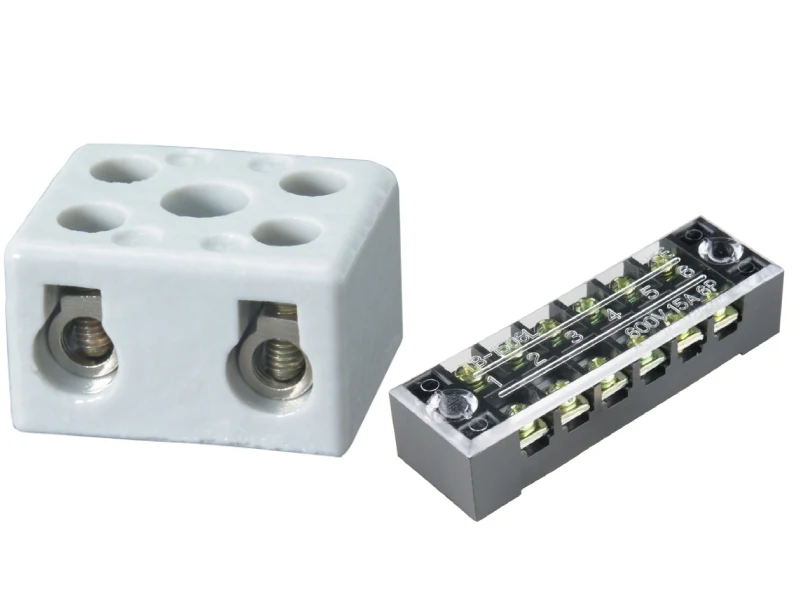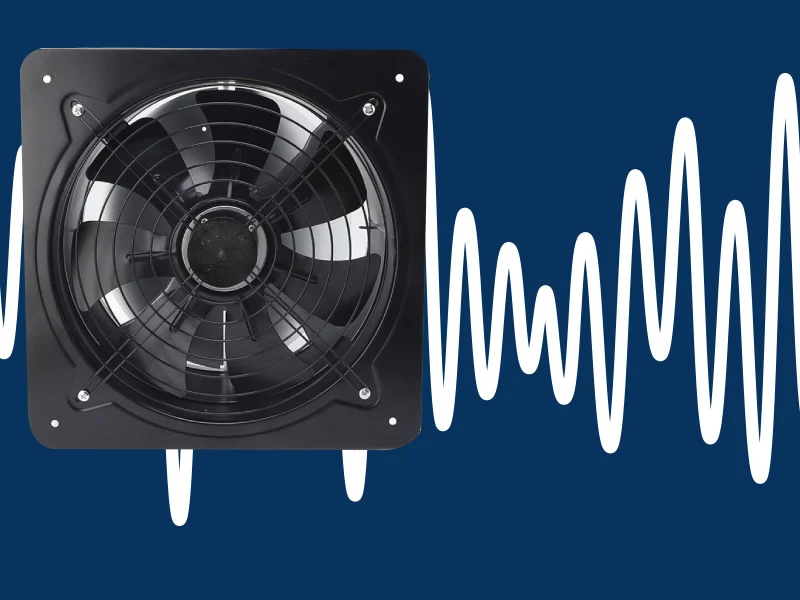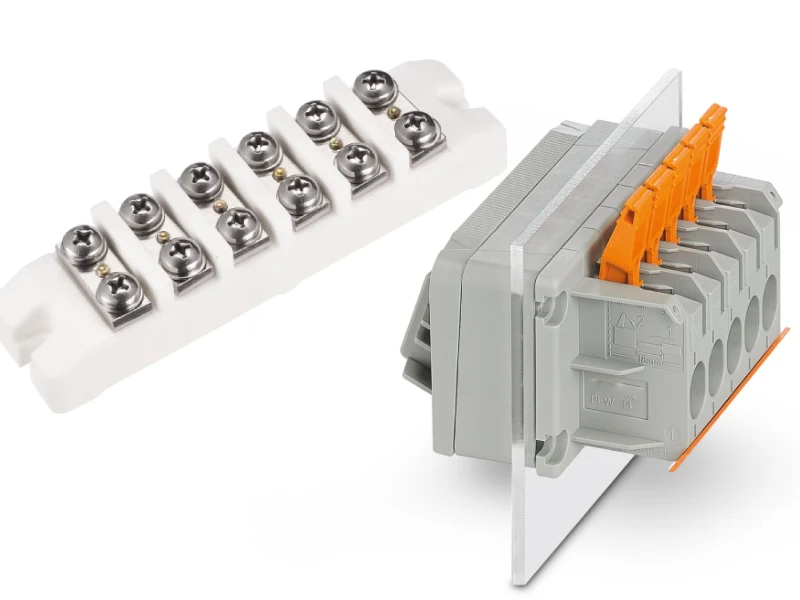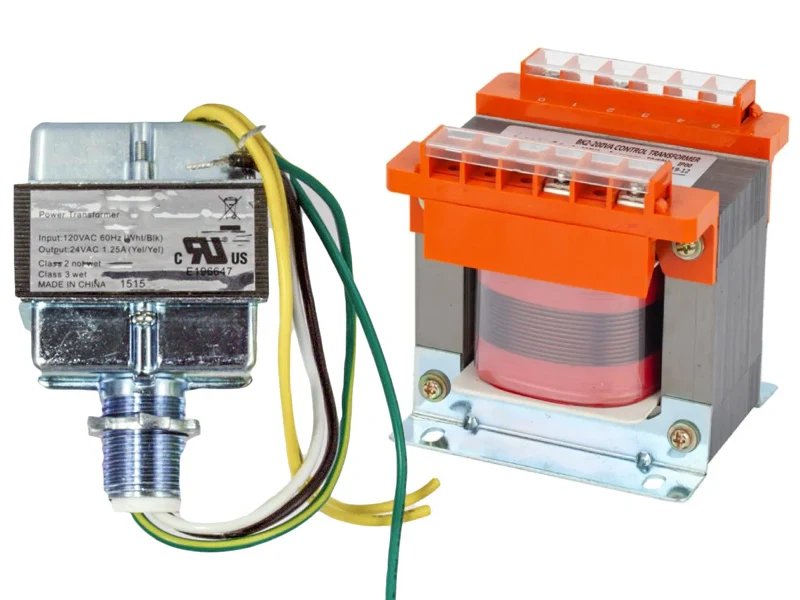If you’re comparing a ceramic terminal block VS terminal block made from standard materials, the main difference comes down to heat resistance and safety. Ceramic terminal blocks excel in handling extreme temperatures and fire hazards, making them ideal for environments such as furnaces, kilns, and heavy-duty industrial machinery. If your application demands secure wiring in high-temperature areas or you want added assurance in emergency systems, ceramic terminal blocks are the smart option. For routine electrical installations, a standard terminal block typically meets everyday requirements. Linkwell provides dependable solutions for both ceramic terminal block VS terminal block needs, ensuring your toughest industrial projects are covered.
Key Takeaways
- Ceramic terminal blocks excel in high-temperature environments, handling heat above 1000°C, making them ideal for furnaces and kilns.
- Standard terminal blocks are more affordable and suitable for everyday electrical installations, providing reliable connections in typical conditions.
- Choosing the right terminal block enhances safety and efficiency, potentially reducing electrical failures and maintenance time significantly.
- Ceramic blocks offer superior chemical resistance, making them perfect for harsh environments like labs and chemical plants.
- Linkwell provides customizable terminal block solutions, ensuring you get the right fit for your specific project needs.
Understanding Terminal Blocks
What Are Terminal Blocks?
You see terminal blocks everywhere in electrical panels and control cabinets. These small devices help you connect, organize, and secure wires. If you want a neat and safe wiring setup, terminal blocks make your job easier. They act as junction points, letting you join wires without twisting or taping them together.
Terminal blocks have become essential in modern electrical systems. The global market for terminal blocks keeps growing. Take a look at this table to see how the market is expanding:
| Year | Market Size (USD Billion) | CAGR (%) |
|---|---|---|
| 2023 | 4.78 | 5.1 |
| 2031 | 7.12 |
Manufacturers design terminal blocks with three main parts. Each part plays a key role in performance and safety:
| Component | Description |
|---|---|
| Insulating Body | Made from high-strength, heat-resistant materials like thermoplastics or thermosetting resins. |
| Conductive Busbar | Composed of conductive metals like copper or brass, providing an electrical pathway with minimal resistance. |
| Clamping Mechanism | Secures cables to the busbar, ensuring a stable connection and preventing loosening due to stress. |
The current-carrying body sets the rated current capacity and reliability. The clamping mechanism keeps contact resistance low and stable, so you avoid overheating and accidental disconnection.
Types and Core Functions
You’ll find several types of terminal blocks, each with a special job. Here’s a quick rundown:
- Feed-thru Terminal Blocks: Connect two wires for wire-to-wire connections.
- Ground Terminal Blocks: Link incoming wires to ground, keeping your system safe.
- Fused Connection Terminal Blocks: Include a fuse for overcurrent protection, perfect for PLC setups.
- Multi-Level Terminal Blocks: Handle multiple terminations in one block, saving space and helping you expand.
- Disconnect Terminal Blocks: Let you disconnect wires easily with a lever.
Tip: Choosing the right type of terminal block helps you simplify wiring, boost safety, and keep your electrical system running smoothly.
Now that you know the basics, you’re ready to explore the differences between ceramic and standard terminal blocks.
Ceramic Terminal Block vs Terminal Block: Key Differences

When you look at ceramic terminal block vs terminal block made from standard materials, you’ll notice some big differences. Let’s break down what sets them apart so you can pick the right one for your project.
Material and Construction
You’ll find that the main difference starts with what each block is made of. Ceramic terminal blocks use high-grade ceramic, which gives them excellent thermal and electrical insulation. Standard terminal blocks usually use plastic or metal. This makes them more durable if you need to handle mechanical stress, but they don’t offer the same level of heat protection.
Here’s a quick comparison:
| Feature | Ceramic Terminal Blocks | Standard Terminal Blocks |
|---|---|---|
| Material Composition | Ceramic (high insulation) | Plastic or metal |
| Mechanical Strength | Fragile, not for heavy stress | Robust and durable |
| Typical Applications | Heaters, furnaces, high-power equipment | General electrical wiring |
Note: If you need something for high-heat or fire-prone areas, ceramic terminal block vs terminal block made from plastic or metal is a clear win for ceramics.
Temperature and Fire Resistance
Temperature is where ceramic terminal block vs terminal block really stands out. Ceramic terminal blocks can handle continuous heat above 1000°C. Some types even go up to 1600°C. You won’t get that from standard terminal blocks. Most plastics start to soften or melt at much lower temperatures, so they’re not safe for high-heat jobs.
- Ceramic terminal blocks: Withstand 1000–1600°C, perfect for furnaces, ovens, and emergency systems.
- Standard terminal blocks: Not designed for extreme heat, best for everyday electrical panels.
If you work in an environment where fire safety matters, you’ll want to choose ceramic terminal block vs terminal block made from standard materials.
Electrical and Mechanical Performance
You want your connections to stay safe and reliable. Ceramic terminal block vs terminal block offers different strengths here. Ceramics give you top-notch electrical insulation, so you don’t have to worry about short circuits in high-voltage or high-temperature settings. Standard terminal blocks, especially those from trusted brands like Linkwell, provide strong mechanical performance and are easier to install in most control cabinets.
- Ceramic: Best for electrical insulation in harsh, hot environments.
- Standard: More robust against physical stress, easier to use for routine wiring.
Linkwell’s terminal block connectors are engineered for both safety and ease of use, so you get reliable performance whether you choose ceramic or standard.
Chemical and Environmental Resistance
Let’s talk about chemicals and the environment. Ceramic terminal block vs terminal block shows another big difference here. Ceramics resist acids, bases, and solvents very well. This makes them a smart choice if you’re working in a lab, chemical plant, or anywhere with harsh substances. Standard terminal blocks can handle most environments, but they might not last as long if exposed to strong chemicals.
Ceramic terminal blocks also keep their insulation and strength even in tough conditions, like high humidity or temperature swings. Some models use silicone rubber seals to boost humidity resistance.
Cost and Availability
You might wonder about price and how easy it is to get these products. Ceramic terminal block vs terminal block usually costs more because of the special materials and manufacturing process. Standard terminal blocks are more affordable and widely available. If you need a large quantity for a big project, Linkwell offers bulk orders and custom solutions, so you can get exactly what you need without breaking the bank.
Quick Reference Table
Here’s a handy table to help you compare at a glance:
| Feature | Ceramic Terminal Blocks | Standard Terminal Blocks |
|---|---|---|
| Max Temperature | 1000–1600°C | 85–150°C (typical plastics) |
| Fire Resistance | Excellent | Limited |
| Chemical Resistance | High (acids, bases, solvents) | Moderate |
| Mechanical Strength | Fragile | Strong |
| Cost | Higher | Lower |
| Best Use | High-temp, hazardous, industrial | General wiring, control panels |
When you compare ceramic terminal block vs terminal block, think about your environment, safety needs, and budget. Linkwell’s expertise means you get quality and support, no matter which type you choose.
Applications and Use Cases
High-Temperature Environments
You often face extreme heat in industries like metalworking or food processing. High temperature ceramic terminal blocks shine in these situations. You see them in electric furnaces, kilns, ovens, and even engine control systems. These panel mounted terminal blocks handle continuous heat above 1000°C, so you never worry about melting or fire. Here’s a quick look at why they work so well:
| Feature | Description |
|---|---|
| Material | Ceramic body resists high temperatures |
| Temperature Resistance | Handles several hundred degrees Celsius and more |
| Durability | Stands up to thermal shock, impact, and chemicals |
| Electrical Insulation | Prevents leaks and short circuits |
If your application involves heating elements or catering equipment, high temperature ceramic terminal blocks are the safest choice.
Industrial and Automation Settings
In factories and automation, you need reliable connections that last. Panel mounted terminal blocks and din rail mounted terminal blocks both play a big role here. You find screw, spring, and push-in types in control panels, power systems, and modular machines. These blocks offer easy wiring, strong connections, and quick changes. Linkwell’s Terminal Block Connector gives you flexibility for bulk orders and custom setups. You can trust these solutions for power distribution terminal blocks in high-current applications.
Safety tip: Always choose terminal blocks with strong insulation and protection features. Look for products that meet international safety standards for your automation application.
General Electrical Installations
You use panel mounted terminal blocks every day in control cabinets and switching devices. These blocks make wiring simple and organized. Feed-through and pluggable types help you connect wires fast, even in tight spaces. Din rail mounted terminal blocks let you expand or modify your setup with ease. For power distribution terminal blocks, you get reliable performance in less demanding environments. Always check that your terminal blocks meet IEC and UL standards for your application.
Specialized and Hazardous Locations
Some environments demand extra safety. High temperature ceramic terminal blocks work best where fire safety or chemical resistance matters most. You see them in fire suppression panels, emergency shutdown circuits, and labs with harsh chemicals. These blocks meet strict certifications like ATEX, IECEx, and UL for hazardous locations. When your application involves critical safety systems, ceramic’s non-combustible nature gives you peace of mind. Linkwell supports you with panel mounted terminal blocks and power distribution terminal blocks designed for these tough jobs.
Choosing the Right Terminal Block
Factors to Consider
Picking the right terminal block can make your project safer and more reliable. You want to match the block to your system’s needs. Start by looking at these key features:
| Feature | Description |
|---|---|
| Temperature Stability | Handles up to 450°C (842°F) |
| Electrical Insulation | Keeps connections safe |
| Resistance to Corrosion | Lasts longer in tough environments |
| Resistance to Thermal Shock | Stays strong with sudden temperature changes |
| Customizable Configurations | Fits special project requirements |
You should also ask yourself a few questions before you decide:
- What is the highest temperature your system will reach?
- How much current and voltage will flow through the block?
- Will the block fit the wire sizes you plan to use?
- Will it face moisture, chemicals, or outdoor weather?
Tip: Always check the ratings for current and voltage. Using the wrong block can cause overheating or even short circuits.
Safety and performance matter most. Here’s a quick checklist to help you:
- Match the block’s current and voltage to your system.
- Think about where you’ll install it—indoors, outdoors, or near chemicals.
- Choose materials that last, like copper for conductivity or ceramics for heat.
Linkwell Terminal Block Connector Solutions
When you need a terminal block that fits your exact needs, Linkwell has you covered. You get more than just a basic connector. Linkwell offers:
| Feature/Customization Option | Description |
|---|---|
| Double-layer design | Saves space and boosts connectivity. |
| Variety of accessories | Includes label strips, mark holders, and end stoppers for easy organization. |
| Customization availability | Lets you pick the type, size, and color that works best for your project. |
You can order in bulk or request special features. Linkwell’s connectors handle high current and voltage, so you can trust them in demanding jobs. If you need help choosing, Linkwell’s team supports you every step of the way. You get reliable performance, easy installation, and options that fit your project—no matter how unique.
Choosing between ceramic and standard terminal blocks depends on your needs. Check out this quick comparison:
| Feature | Ceramic Terminal Blocks | Standard Terminal Blocks |
|---|---|---|
| Material Properties | Ceramic (porcelain, steatite) | Thermoplastics or thermosets |
| Temperature Resistance | High, above 200°C | Lower, for standard temperatures |
| Mechanical Strength | Superior | Adequate for most uses |
| Application Suitability | High-temp, high-strength environments | Everyday electrical installations |
Picking the right terminal block boosts safety and efficiency. Reliable connections can cut incident rates by 25% and reduce maintenance time by 30%. You also prevent about 30% of electrical failures by making smart choices in temperature monitoring and control.
You want a partner you can trust. Linkwell products meet strict safety standards, carry UL and CE certifications, and offer advanced features for peace of mind.
- Linkwell products follow strict safety and efficiency standards.
- Certified by UL and CE for compliance.
- Advanced features like touch-safe covers and fire-resistant materials.
FAQ
What makes a ceramic terminal block different from a standard one?
You get a ceramic terminal block when you need a connection that can handle extreme heat. Standard terminal blocks work well for most electrical jobs, but ceramics give you extra safety in high-temperature spots. The connection stays secure even when things get hot.
Can I use a standard terminal block for high-temperature applications?
You should not use a standard terminal block where heat is a problem. The connection might fail if the plastic melts or warps. For ovens, kilns, or heaters, always pick ceramic for a safe and lasting connection.
How do I know which terminal block is right for my project?
Start by thinking about your environment. If you expect heat, chemicals, or heavy use, choose ceramic for a strong connection. For everyday wiring, a standard block gives you a reliable connection. Always match the block to your system’s needs.
Are Linkwell terminal block connectors easy to install?
Yes! You can set up a connection quickly with Linkwell’s design. The connectors fit many cabinet types and make your wiring job simple. You get a secure connection that holds up in tough industrial settings.
What should I check during installation for a safe connection?
Always strip wires cleanly and tighten screws to the right torque. Make sure the connection is firm and the housing is not damaged. A good connection keeps your system safe and helps prevent future problems.




